7 Nov 2011
Posted by Michelle in Travel | 0 comments
A couple of weekends ago Geoff and I decided to visit UNESCO listed Drottningholm Palace, the permanent residents of the Swedish royal family, located just outside of Stockholm.
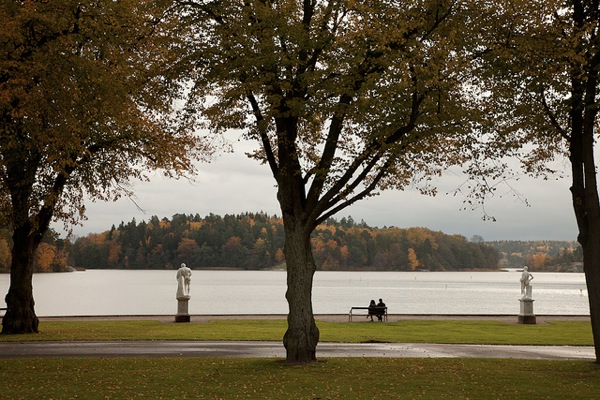
The Palace is pretty from the outside, and the gardens are even nicer – beautiful lakes and parks. A great place for a day trip from Stockholm, and in summer, the perfect location for a picnic overlooking the water.
I would not recommend paying to go inside however. It is a bit of a pity really, the rooms themselves are fairly nice, but it looks like random pieces of furniture (mostly covered with dust covers) have been strewn across the rooms without any thought or design, and some of the rooms are empty of anything at all. Compared to Schönbrunn in Austria for example -where each room is beautifully designed and decorated, making you almost believe you have stepped into the old Hapsburn Empire, and at any moment Sissy might stroll into the room- the rooms open to the public at Drottningholm Palace are a real disappointment.
But just ignore the inside of the palace, and enjoy the beautiful gardens surrounding it.
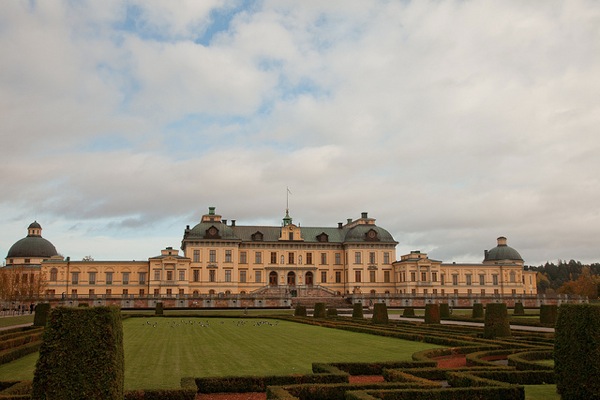
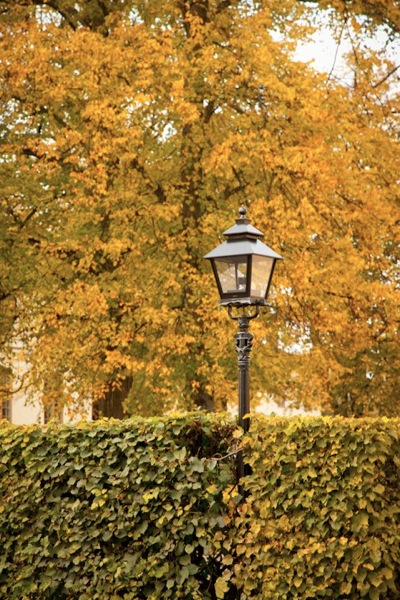
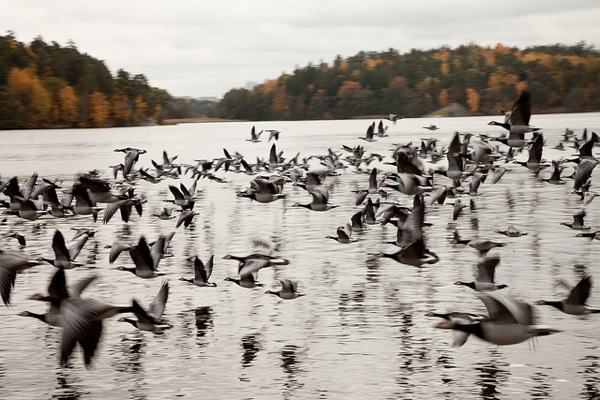
Drottningholm Palace was a nice adventure for the day, but I would not really recommend it if you are just visiting Stockholm for a couple of days. There are many more lovely places to visit – such as the archipelago for example, and the city itself.
To get there from Stockholm take the T-Bana to Brommaplan and then swap to busses 301-323.
3 Nov 2011
Posted by Michelle in Expat Life, Language | 6 comments
Last week I made a huge step forward in Swedish – I spent time with a friend, just in Swedish.I was not sure if this day would ever come. When I lived in Austria, I studied German, but I was always too shy to chat in German to anyone but people working in shops or cafes. Even my best friend, an Austria, has still never had a conversation with me in German.
So when I met my friend this week, and she asked ‘English or Swedish?’, I replied ‘Swedish’, mostly because we both studied Swedish together a couple of months ago at the Folkuniversitetet and it seemed only fair as it was a second language we both shared. I expected it to switch to an English/Swedish hybrid conversation at some point, as I have not studied Swedish for about 7 weeks now, but somehow we had a lovely lunch talking about the differences in schooling in France, Sweden and Australia, our Christmas plans and how life is going in Sweden – all in Swedish. Of course it is much easier to chat when you are both learning the language, we are not fluent yet, so we are able to improvise and understand each other – sometimes through mime, but mostly by explaining things in different ways until the other completely understands. It was a really great feeling, and it has definitely encouraged me to start studying Swedish again and I’ll be starting a course 5 days a week for a month shortly.
Talking with a native Swede is still a bit of a challenge, often because they swap to English as soon as they hear your accent, mostly out of kindness (or convenience?), which can make it a challenge to practice. Luckily, the people in my local cafe recognise me now and know I want to speak in Swedish so they don’t swap, this led to an interesting experience this week when I thought I was ordering some sort of red meat for lunch, and ended up with a delicious meal of fish (a type of fish I didn’t know the name of). At least things that would be simple and mundane in your home country and mother tongue make you feel like you are living life on the edge overseas… like the excitement of a small child when it learns something that by adulthood seems routine.
Now my next Swedish goal is to be able to hang out with a native Swedish friend, in Swedish, and have them not loose the will to live! I hope I can achieve this next year some time, but there is still a long way to go.
29 Oct 2011
Posted by Michelle in Expat Life, Sweden | 0 comments
I have always loved autumn, but particularly so in Stockholm. It is so beautiful here at the moment, and the change is much more dramatic than I have seen before. Here I am surrounded by beautiful golden, orange and red trees, and piles of leaves everywhere, and … mini decorative pumpkins!
This was taken the other weekend in Skansen, the open air museum in Stockholm.
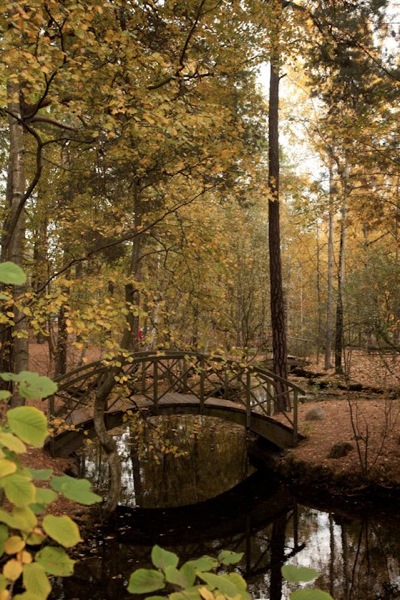
My local tram stop looks like this right now. It makes me happy every day as I walk past it:
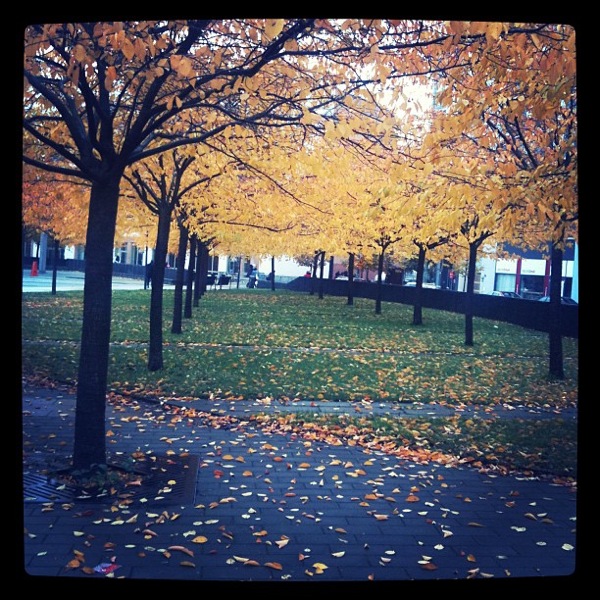
One thing I particularly love are the mini decorative pumpkins you can buy everywhere:
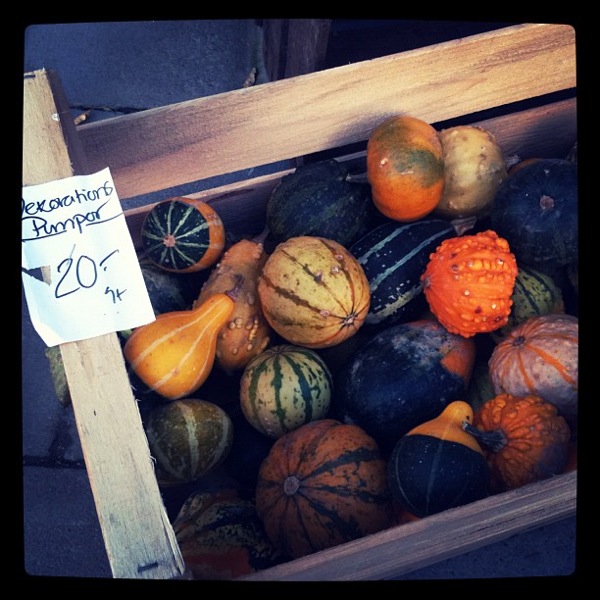
I have seen these mini pumpkins in flower arrangements, and in autumn some people buy them to decorate their houses… it is pretty cute really.
Here is one in my teacup for scale:
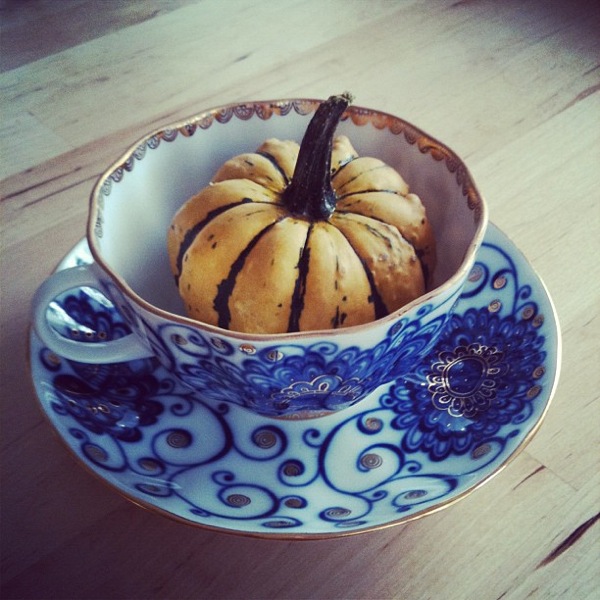
Swedes love to make the inside of their houses cosy and beautiful, probably something to do with the very long and dark winters, most of which are spent indoors. They are the kings of indoor plants (especially orchids), flower arrangements, lamps, fairy lights and plenty of candles – everywhere. When I go out for dinner at night here, most of the windows I walk past have candles lit, it seems a very Scandinavian thing. I did once read that the year Denmark was rated as the most happy nation in the world, they also coincidentally were found to be the highest consumers of candles per person in the world. A coincidence? I think not.
Now perhaps I should go and light some candles …
27 Oct 2011
Posted by Michelle in Recipes | 3 comments
There is nothing I love more in life than a wintery recipe containing cinnamon, and this one, with light and fluffy sponge, drizzled with an almost glühwein flavoured caramelised sauce of cinnamon, star anise, orange, lemon, vanilla bean and pear, was simply divine. It is especially perfect on a cold, Autumn night, with a nice bottle of wine and some good friends.
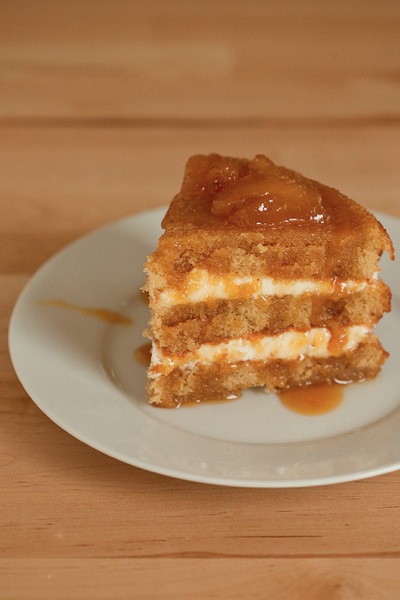
The recipe I used is based on the one found here although as you can see I made only three layers of sponge cake and as a result, made less of the crème fraîche filling. I also added some pear essence to the sponge itself – only 1/4 teaspoon for each layer, and when I make this again, I plan to use at least 1/2 a teaspoon per layer. Don’t be turned off by the sheer number of ingredients or steps, it is much more straight forward than it looks!
The Recipe (for three layers)
Ingredients for the Sponge
9 eggs
120 g brown sugar
120 g caster sugar
1 1/2 vanilla beans (the seeds)
1 1/2 tsp pear essence (not essential)
225 g flour, sifted three times
1/2 teaspoon of baking powder
90 g unsalted butter, melted and cooled
Ingredients for the Filling
500 g crème fraîche
100 g cream
30 g icing sugar
1/2 vanilla bean (the seeds)
Ingredients for the Caramel Pears
700 g caster sugar
Juice and rind of 11/2 lemons and oranges
2 cinnamon sticks
1 star annise
1 vanilla bean (the seeds and bean)
8 ripe pears, cut in half and the core removed (use a spoon if you don’t have a melon baller)
120 ml of desert wine (optional)
100 ml cream
30 gm butter
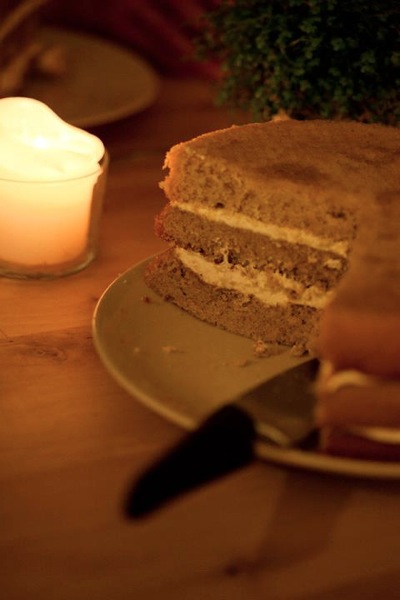
Method
1. Preheat your oven to 180C.
2. I made the sponge three times as I don’t have an oven that can hold 3 cakes, nor do I have 3 cake pans. If you will also do this, then simply divide the recipe by three and make it three times so that the mixture is still light and fluffy by the time you put it in the oven. Whisk the eggs, sugars and the vanilla seeds (and pear essence if you have it) together until very light and fluffy. This will take around 10 minutes. Sift the flour and baking powder together in another bowl (3 times) and fold into the eggs mixture in two lots. Fold in the butter. Butter your cake tin (20 cm) and carefully pour in the mixture. Cook for 15 minutes.
3. Repeat step 2 twice more if you plan to make each layer at a time.
4. Whip the crème fraîche, cream, icing sugar and vanilla bean seeds together until light and fluffy. Leave in the fridge for later.
5. Peel, halve and core the pears. Add to a large saucepan the rinds, sugar, juices, spices, vanilla bean and seeds, along with 1 litre of water and once the sugar has disoved, add the pears. Simmer with a lid until the pears are tender, and then remove them to a bowl for later. Strain the liquid and simmer again until the sauce begins to reduce and thicken. Add in the butter, cream and desert wine and stir together. Add in the pears again to warm them.
6. Now it is time for the fun! Build you cake, starting with a sponge layer, a little drizzle of caramel sauce, the crème fraîche layer, another sponge layer, repeat, etc. Once you have finished, drizzle the entire cake in your caramel sauce, and place the pears strategically over the top of the cake.
7. Cut and serve while warm. Enjoy!
24 Oct 2011
Posted by Michelle in Travel | 0 comments
Anyone who has met me more than once will know of my love for Christmas, and especially for exploring Christmas markets throughout Europe. I love the atmosphere, even though they are bustling with people there is such a nice feeling of coziness, the scent of warm spiced wine and gingerbread in the air, live music playing, glittering fairy lights, delicious wintery food, and people in festive moods.
But what are the very best Christmas markets in Europe? Here are my top six.
1. Vienna Christmas Markets at the town hall (Austria)
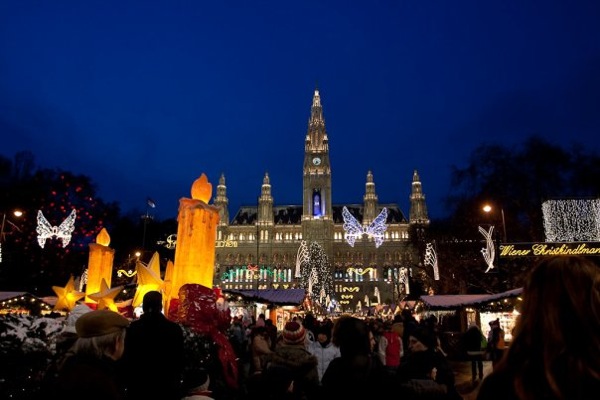
In mid November, Christkindlmärkte, or Christmas markets, begin to sprout up throughout Vienna, and beautiful ones can be found at Schönbrunn palace, Belvedere, in the park between the art history museum and the natural history museum, and at Karlskirche, to name but a few. However the most famous and largest is the market at the Rathaus (town hall), with a history stretching all the way back to 1296.
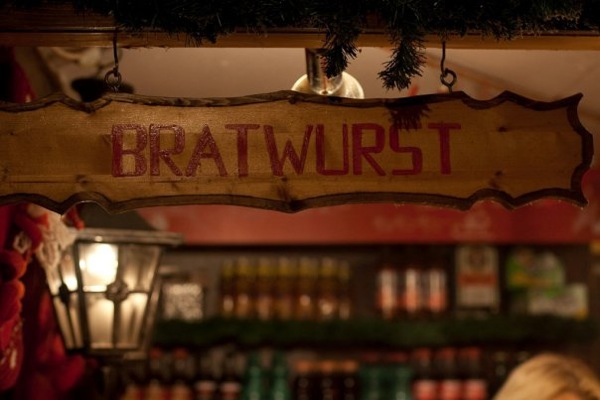
At the markets 145 stalls you can sample the many different varieties of punsch or glühwein (spiced, warm wine). Some are made with berries, others mixed with amaretto or even orange juice. If you don’t drink alcohol, keep an eye out for ‘kinder punsch’, which is alcohol free and also appropriate for children. If you are hungry you can find plenty of lebkuchen (gingerbread), toasted chestnuts or almonds, smoked ham, delicious freshly baked bread, bratwurst, all manner of chocolate dipped deliciousness, or kartoffelpuffer (warm potato cakes).
You can also find a wide selection of delicate glass ornaments for your Christmas tree, and, my favourite, brightly painted nutcrackers of all sizes.
The park surrounding the town hall and the market is itself worth visiting. The trees are decorated with beautiful lights of all shapes and sizes, some to look like delicious bonbons, others hearts or Chinese lanterns. In the park, a little railways system is set up for children to enjoy, and inside the town hall itself, there are workshops for children where they can make cookies and other arts and crafts as christmas presents for their family.
In 2011, the market is open from the 12th of November until the 24th of December.
To get there take the U-Bahn line U2 to Rathaus.
The official website can be found here.
2. Nuremberg Christmas Markets (Germany)
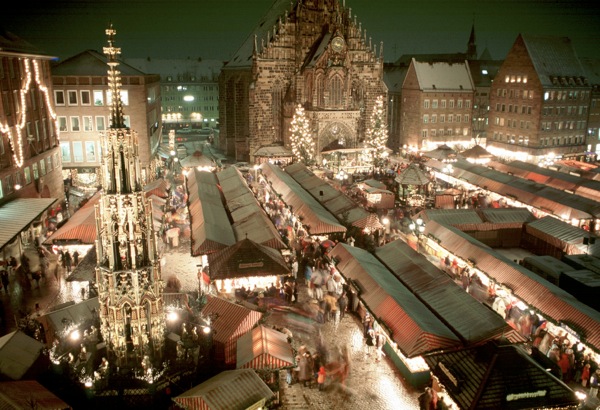
Image used with permission
Dating back to 1628, the Christmas Market on the main square in Nuremberg is one of the oldest and most popular in the world, with over two million visitors a year. The market has 180 stalls selling glühwein, gingerbread, Christmas ornaments, toys, spices, teas and much more. A great emphasis is placed on creating a beautiful and authentic market environment, and ‘plum people’ awards are given each year to the three best decorated stalls.
Speaking of ‘plum people’ or Nürnberger Zwetschenmännle, there are a number of stalls selling these decorations made from wood and prunes, in a tradition dating back to the 1600’s. No explanation is given as to why this might be the case, or who originally thought it would be an excellent idea to fashion people from prunes, but you have to give it to them for originality and uniqueness!
Open Friday the 25th of November 2011 until Saturday the 24th of December 2011.
To get there, check the detailed information here.
The official website can be found here.
3. Gothenburg Christmas Markets at Liseberg (Sweden)
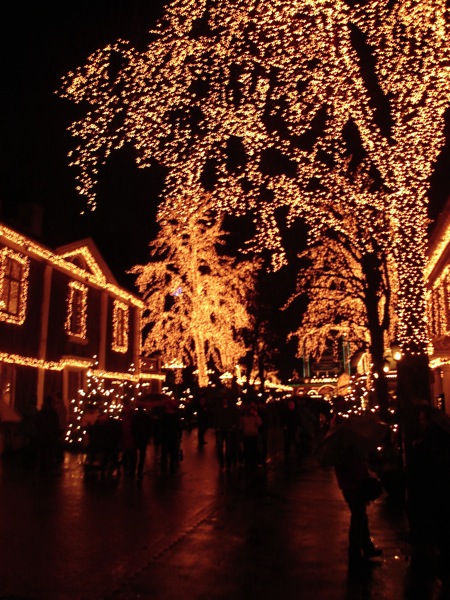
Liseberg Christmas market is the largest in Sweden, and it was here that I saw my first reindeer, in a Sami village built for the occasion. It really is the market of light in the dark Scandinavian winter, with over five million Christmas lights decorating the park. The very lovely thing about this market is that despite it being located in an amusement park, there is still a very Swedish feeling about it.
Buy some warm spiced glögg and, Swedish style, dip in a couple of crispy pepparkakor (Swedish gingerbread thins) or visit a little cafe selling delicious waffles served with cream and lingonberry jam. At the restaurants you can also indulge in a traditional Swedish julbord or Christmas table/buffet of Swedish Christmas delicacies such as meatballs with lingonberry jam, herring, beetroot salad, Christmas ham, smoked salmon, and rice pudding.
You can also go ice skating there, or if you prefer a different kind of icy entertainment, try some vodka at the icebar.
In 2011, the Gothenburg Christmas markets are open on November the 18 – 20, 25th to 27th and the 30th, as well as the 1st – 23rd of December.
As it is located in the Liseberg amusement park, there is an entrance fee of 90 SEK for Adults, with children under 7 entering for free.
You can find the official website here.
4. Salzburg Christmas Markets (Austria)
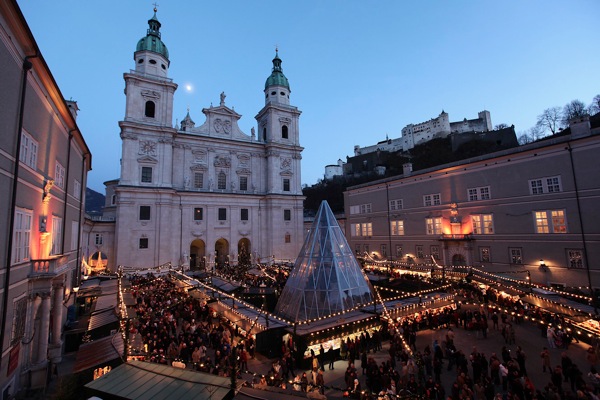
Image used with permission: www.christkindlmarkt.co.at Salzburg
The Salzburg Christkindlmarkt is worth visiting for its beautiful location alone, set amidst the old town, with the Hohensalzburg fortress in the background.
It offers the usual Christmas market fare: warm glühwein, beautiful glass Christmas tree decorations, toys, and of course a wonderful atmosphere.
The market is open in 2011 from the 17th of November until the 26th of December.
To get there take bus line 3, 5 or 6 to the stop Mozartsteg or take the S-Bahn to the stop Salzburg Mülln-Altstadt and walk 10 minutes to the market.
The official website can be found here.
5. Munich Christmas Market (Germany)
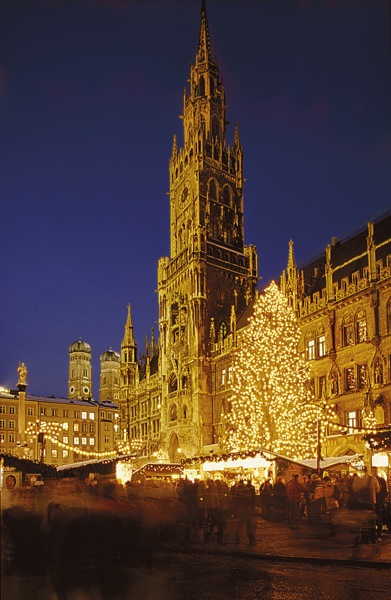
Image used with permission
Dating back to the 14th century, the Christkindlmarkt at Marienplatz in front of the Munich town hall in the old town is one not to be missed.
Unique experiences include Bavarian singing lessons on Sunday December the 4th and 18th 2011, and a Christmas tram ride through the city centre.
They have of course, mulled wine and delicious Bavarian food, but one thing I particularly loved about the Christmas market in Munich was that beautiful carved wooden Christmas ornaments, something I had not seen in other markets.
The Munich Christmas market is open from November the 24th to December the 25th in 2011.
To get there, take the underground to Marienplatz or the bus line 52 or 131, or the tram line 19.
The official website can be found here.
6. Karlskirche Christmas Market in Vienna (Austria)
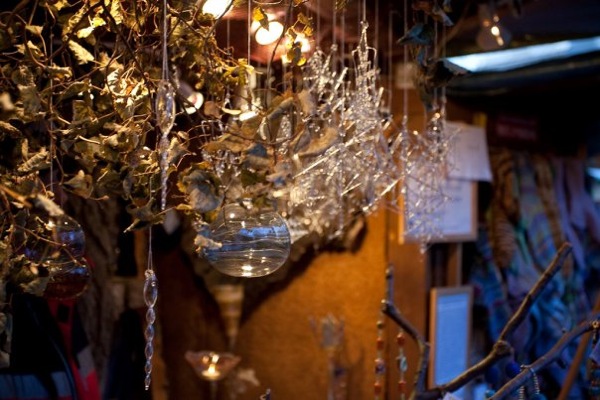
Are you looking for a Christmas market that is a little more unique? Then I would recommend that you visit the smaller arts and crafts market at Karlskirche in Vienna.
This Christmas market is slightly less touristy than its huge counterpart at the town hall, and filled with handmade goods by local artists, such as pottery, clothing, sculpture, photography, blown glass ornaments, jewellery and so on. At certain times can also watch the local artists in action, for example silver smiths creating jewellery, leather book binding, glass bead creation and much more. See here for a schedule, unfortunately only in German.
Just be careful of taking photos here, or you may be yelled at as a friend of mine unfortunately experienced….
The Karlskirche market is open in 2011 from the 18th of November until the 23rd of December.
To get there take the U-Bahn line U1/2/4 to Karlsplatz.
The official website can be found here.



























